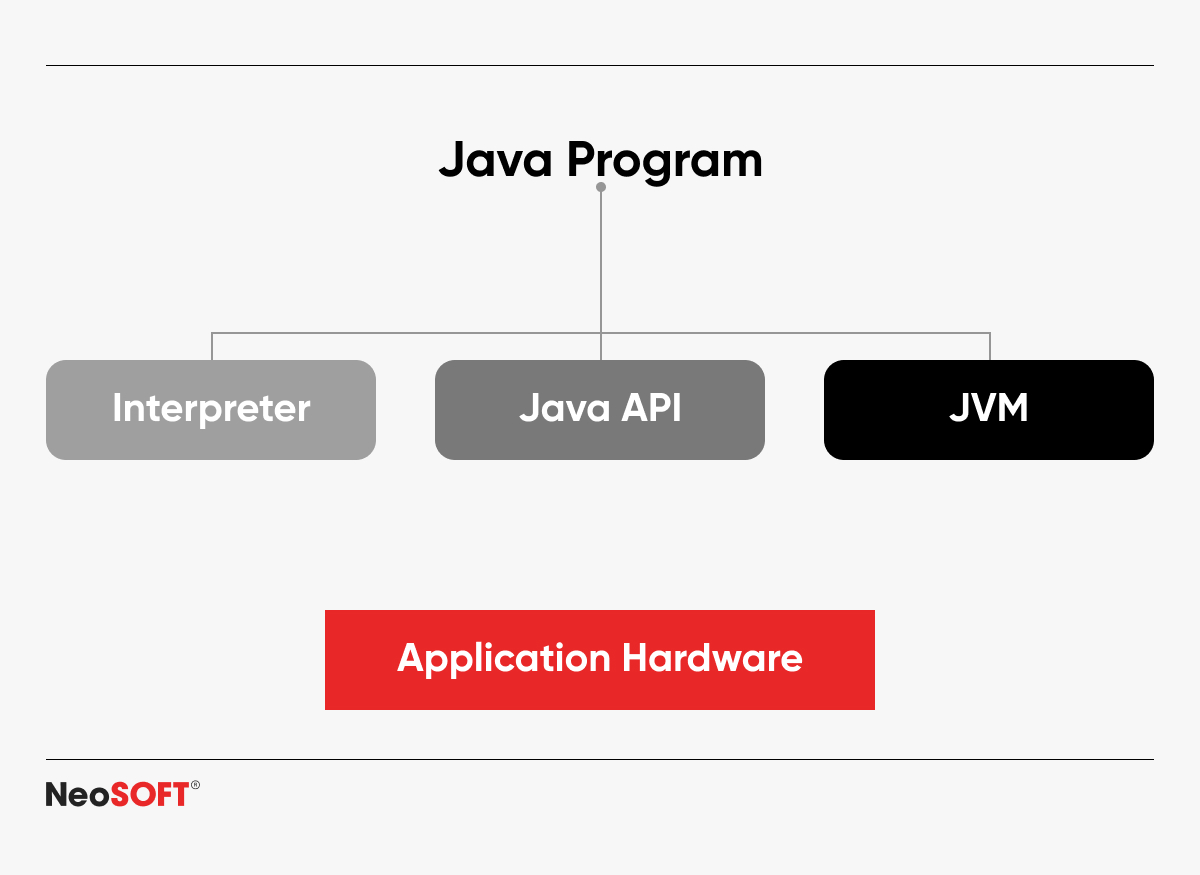Java API Development: The Road to High-Performance APIs
April 22, 2024
This article equips web and app developers to leverage the Java programming language to ensure that web applications, web services, files, modules, and modern web APIs are efficient, responsive, scalable, and fully capable of satisfying the demands of their clients and users.
Introduction
APIs are the essential building blocks of modern software, enabling communication, functionality sharing, and innovative user experiences. Java programming stands out as a powerful and efficient language for building high-performance APIs, addressing the critical needs of today’s demanding software landscape through its scalability, performance, and platform independence.
APIs streamline application communication, saving programmers time and money by utilizing established protocols and functionality. They simplify integration with different systems and web services, fostering more coherent software ecosystems and improved interoperability.
Furthermore, APIs promote innovation by enabling the expansion of existing platforms and services, acting as the building blocks for strong, effective, and creative software solutions.
As companies grow their online presence and user bases, the demand for high-performance APIs has intensified. Modern software, often data-intensive, necessitates APIs that efficiently manage large volumes of requests and deliver rapid responses. Software engineers face increasing pressure to optimize API performance to ensure outstanding user experiences and maintain a competitive edge.
Java: The Powerhouse for High-Performance APIs
Enter Java, an object-oriented programming language renowned for its adaptability across various devices and browsers. Java provides the framework for the Java API, a collection of pre-built functionalities embedded within Java applications.
While seemingly modest, the Java API is crucial for smooth interaction and platform-spanning capabilities. Java’s core strength lies in its architecture and platform independence. Java Virtual Machines (JVMs) ensure that Java applications run on multiple operating systems without modification. The “write once, run everywhere” philosophy translates to consistent performance across multiple devices and browsers.
Java’s popularity among software programmers stems from its power, advanced capabilities, and adaptable frameworks. It’s a reliable and versatile language, a mainstay in the software industry. Java has become a dominant force in API creation, ideally suited to the demands of intricate modern software ecosystems.
The rich ecosystem of Java libraries, frameworks, modules, and tools empowers developers to construct scalable and effective APIs that seamlessly interface with various systems, software components, and services. Java’s platform independence guarantees broad compatibility and accessibility, ensuring APIs function consistently across diverse environments.
Critical Factors Affecting Java API Development
Latency and Response Time: High-performant APIs prioritize minimizing latency and response time to ensure swift user interactions. Techniques like caching, load balancing, and reducing network round trips are crucial. Users expect quick digital experiences, making API response time a critical metric. Quick responses enhance satisfaction and engagement, affecting website reputation and conversion rates.
Scalability: Scalability is essential for APIs to handle increasing traffic and growing data volumes without performance degradation. Horizontal scaling and optimized queries are vital strategies. Horizontal scaling spreads the load across multiple servers, while vertical scaling increases server resources. Load balancing and distributed caching also improve scalability by distributing traffic equally and lowering backend load.
Resource Utilization: CPU, memory, and network bandwidth can be maximized through practical resource usage, which includes load balancing and connection pooling. Monitoring resources and optimizing code and infrastructure is also essential. Techniques including connection pooling and asynchronous processing can reduce contention and enhance API performance.
Network Efficiency: Efficient network communication is vital for API performance as it impacts response times and data transfer speeds. Minimized data payloads, compression, and optimized endpoints can reduce latency. Implementing caching mechanisms like CDNs or edge caching improves network efficiency and security. Enhancing network protocols, such as HTTP/2, lowers latency and increases efficiency.
Now more than ever, users want rapid and flawless digital interactions. If these expectations are met, it can result in a good experience, damaging a website’s reputation and the credibility of the development team.
Best Practices for Performant Java APIs
To achieve optimal performance, maintainability, and scalability in API development – which will improve user experiences and extend the software solution lifetime – it is imperative to adhere to best practices. Here are a few ways to do just that:
API Design Principles
RESTful Design: Following RESTful principles guarantees structured and predictable API calls and interactions. RESTful APIs prioritize resource-based interactions over HTTP and stateless communication, encouraging simplicity and interoperability. Clear separation of responsibilities between clients and servers is achieved by structuring APIs around resources and functions and using standard HTTP methods (GET, POST, PUT, DELETE), which makes further development and maintenance more effortless in the long run.
Resource Representation: Appropriate formats, such as JSON or XML, are necessary for effective data interchange in APIs. JSON is popular because of its widespread acceptance, lightweight nature, and human readability, but XML is preferred in industrial situations where data validation and document structure are required. The choice is based on factors like operating system compatibility, data complexity, and customer requirements.
Resource Endpoints: Maintaining API usability requires unique and well-defined API endpoints for each resource activity (GET, POST, PUT, and DELETE). Every endpoint needs to be linked to a particular resource or group, following a standard naming scheme and structure for the URL. For example, /users/{id} designates a user resource with a unique identity, whereas /users signify a group of resources.
With the above approach, Java developers can build intuitive APIs that are easy to understand and interact with.
REST APIs and API Gateways
As the number of APIs in an application rises, managing them more efficiently becomes more complicated. API gateways address this issue by providing a single entry point for clients to access various REST APIs while handling authentication, authorization, and traffic management.
These gateways allow centralized management, security enforcement, traffic handling, protocol translation, and analytics. They simplify configuration, improve authentication and rate restriction security, optimize load balancing performance, allow seamless communication across diverse technologies, and provide precise API usage statistics.
Thus, REST APIs allow for scalable and interoperable web services, whereas gateways provide centralized management, security, and optimization for numerous APIs. Leveraging both efficiently speeds development, improves security, and ensures dependable application delivery.
Data Modeling and Optimization
Data Model Optimization: Reduces pointless data transfers and processing in APIs. Well-designed schemas maximize efficiency while consuming less bandwidth. Indexing and denormalization are two more strategies that improve database efficiency by streamlining interactions.
Object Serialization: For Java APIs to facilitate data interchange, efficient object serialization is necessary. Libraries like Jackson ensure high-performance JSON processing. Modifying serialization behavior and strategies like lazy loading can also improve API responsiveness and scalability. Serialization must be done efficiently for the best API performance.
Code Optimization
Performance Profiling: Tools like JMeter find and optimize code bottlenecks, examine the API key performance indicators, and identify areas for focused improvements to increase throughput and reduce latency.
Efficient Algorithms and Data Structures: Selecting efficient algorithms and data structures is critical for improving API logic. Two examples of such structures are HashMaps and ArrayLists. Choosing the best algorithms and data structures can drastically improve the performance of Java APIs.
Caching Strategies
A key API development strategy is implementing caching technologies, such as in-memory and distributed caching, to save frequently requested data and reduce database demand.
Caching commonly requested data shortens response times and improves overall API performance by eliminating the need for multiple database queries. Use cache invalidation techniques and approaches like time-based expiration or event-driven invalidation to keep cached data accurate and up-to-date.
API Documentation, Error Handling, and Logging
A robust error-handling mechanism will ensure meaningful and consistent error messages for API consumers. Effective error handling significantly enhances user experience by providing clear feedback on encountered issues and facilitating troubleshooting and resolution.
The development process should also incorporate transparent logging practices to monitor the entire API call activity and identify performance issues. Logging all the API requests, API calls, requests, responses, and critical events enables comprehensive tracking, API documentation, and analysis to save client data, aiding in timely troubleshooting and optimization efforts.
Leveraging Java Features for Performance
Java provides a wealth of capabilities to improve web API functionality and performance. Concurrency is one such feature that handles numerous requests efficiently at the same time.
Java allows multiple processes to run simultaneously, maximizing resource usage and speeding up reaction times by leveraging thread pools. Thread pools control a pool of worker threads, allowing the same API call to process several requests without overloading the system. This method maximizes throughput and responsiveness.
Libraries like Netty offer invaluable assistance for Java’s asynchronous, non-blocking I/O operations. Asynchronous I/O allows APIs to process requests without waiting for each operation to finish, increasing overall throughput and responsiveness. Netty’s event-driven architecture and efficient memory management make it ideal for supporting thousands of concurrent connections with minimal overhead.
Monitoring and Performance Testing
API performance characteristics like latency and throughput must be continuously monitored to ensure optimal system operation. Prometheus, for example, gathers and analyzes real-time data to provide valuable insights about API performance.
Monitoring metrics such as latency helps uncover potential issues that affect user experience, allowing for proactive optimization efforts. Performance decline can be identified early in the development process, and timely action can be taken to maintain efficiency and dependability.
Performance testing, especially load testing, is essential for emulating real-world usage patterns and finding potential bottlenecks before deployment. Load testing involves subjecting APIs to simulated amounts of concurrent user activity to evaluate their performance in many scenarios.
By stress-testing the system in production scenarios, developers can discover scalability limitations, bottlenecks, and resource constraints affecting system performance.
The Importance of Java Documentation
Documentation plays a vital role in API development and helps developers navigate the intricacies of Java and its vast ecosystem. Using meticulously crafted documentation, software developers can gain insights into the functionality, usage, and best practices for effectively leveraging multiple Java APIs.
Whether exploring core Java libraries or third-party frameworks, clear and well-structured documentation facilitates efficient learning, promotes robust development practices, and empowers developers to harness the full potential of Java’s versatile toolset.
Conclusion
By following the essential concepts in this article, software developers can ensure that their Java applications and web APIs—and, therefore, web services—fulfill the needs of end users. Java’s rich ecosystem and powerful characteristics, such as concurrency and platform independence, position it as a cornerstone for performant API and web application development.
Elements like latency, scalability, caching, resource use, and network efficiency directly affect APIs’ scalability, performance, and reliability, affecting user experience and application success. Prioritizing strategies like network optimization, effective resource management, and caching mechanisms helps build an application programming interface that can handle growing traffic loads on the web server, respond quickly, and offer smooth user experiences.
Regular API documentation, monitoring, and performance testing are necessary to identify and fix bottlenecks, guarantee optimal and effective web API development and operation, and sustain high performance. Here, we have highlighted the significance of developing performant APIs to delight users, improve brand reputation, and attain commercial success in today’s competitive digital market.
While API development teams need to be experts at creating and maintaining Java APIs, extensive knowledge of Java’s libraries and development tools will allow them to design effective web APIs for smooth system integration. In addition to this knowledge, knowing the best practices is essential to developing dependable and inventive software solutions for various sectors.
We invite you to share your experiences within the Java community as you create high-performance Java web APIs. By sharing knowledge, code, tools, and experiences, we can empower and encourage cooperation and progress in Java API development.
To learn more about our Java API development services, send us your queries at [email protected].




















